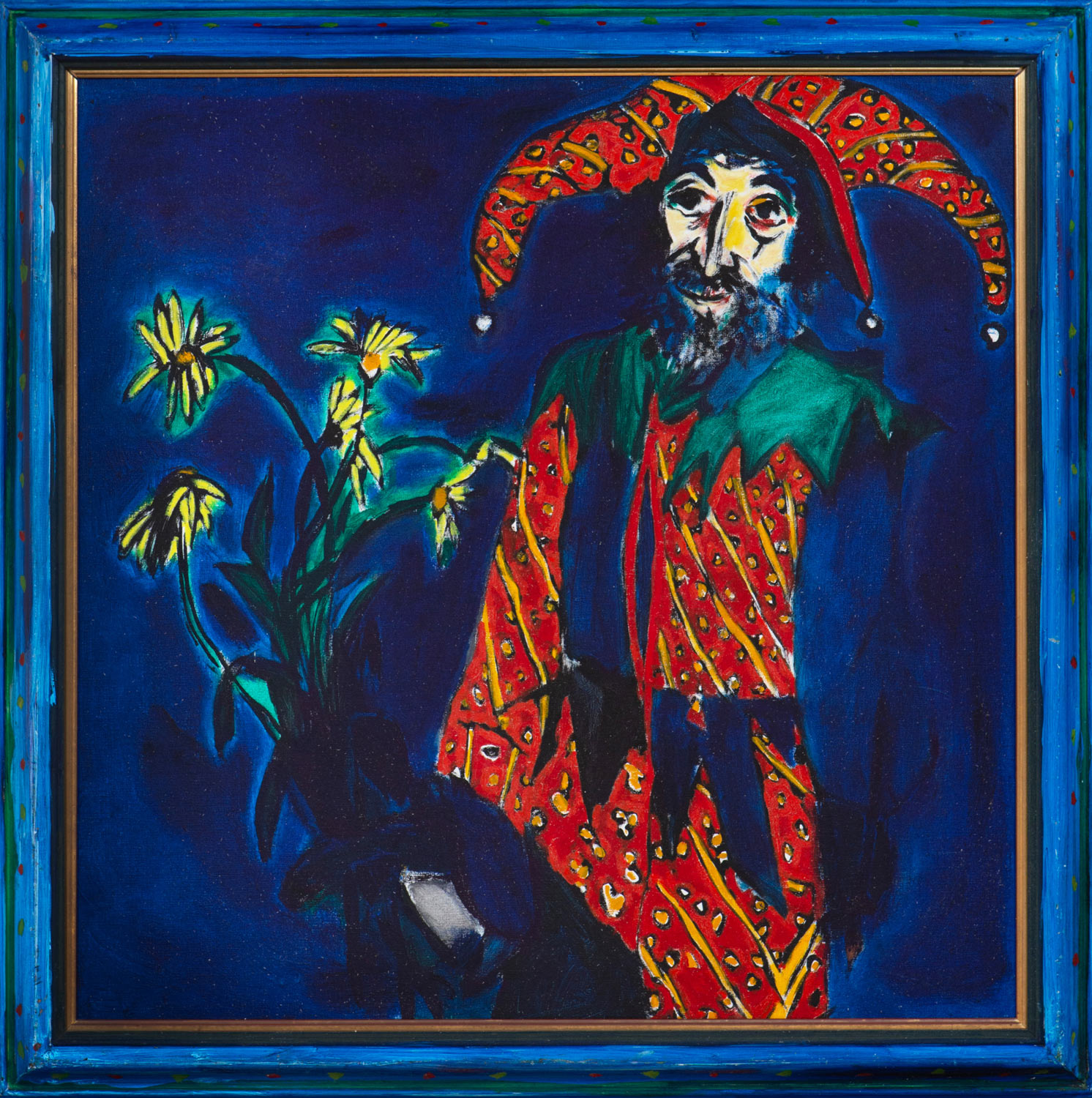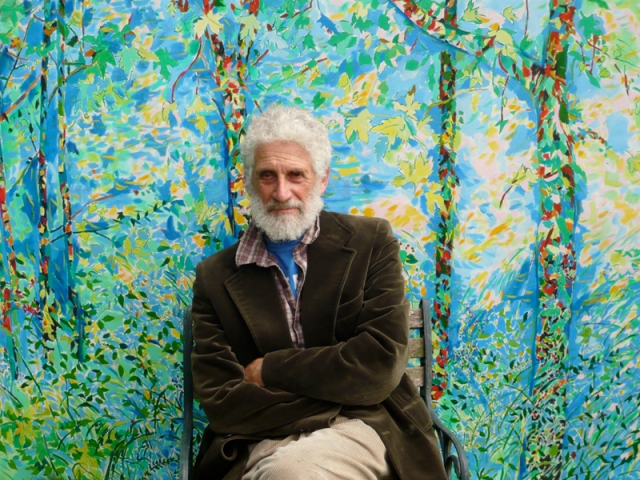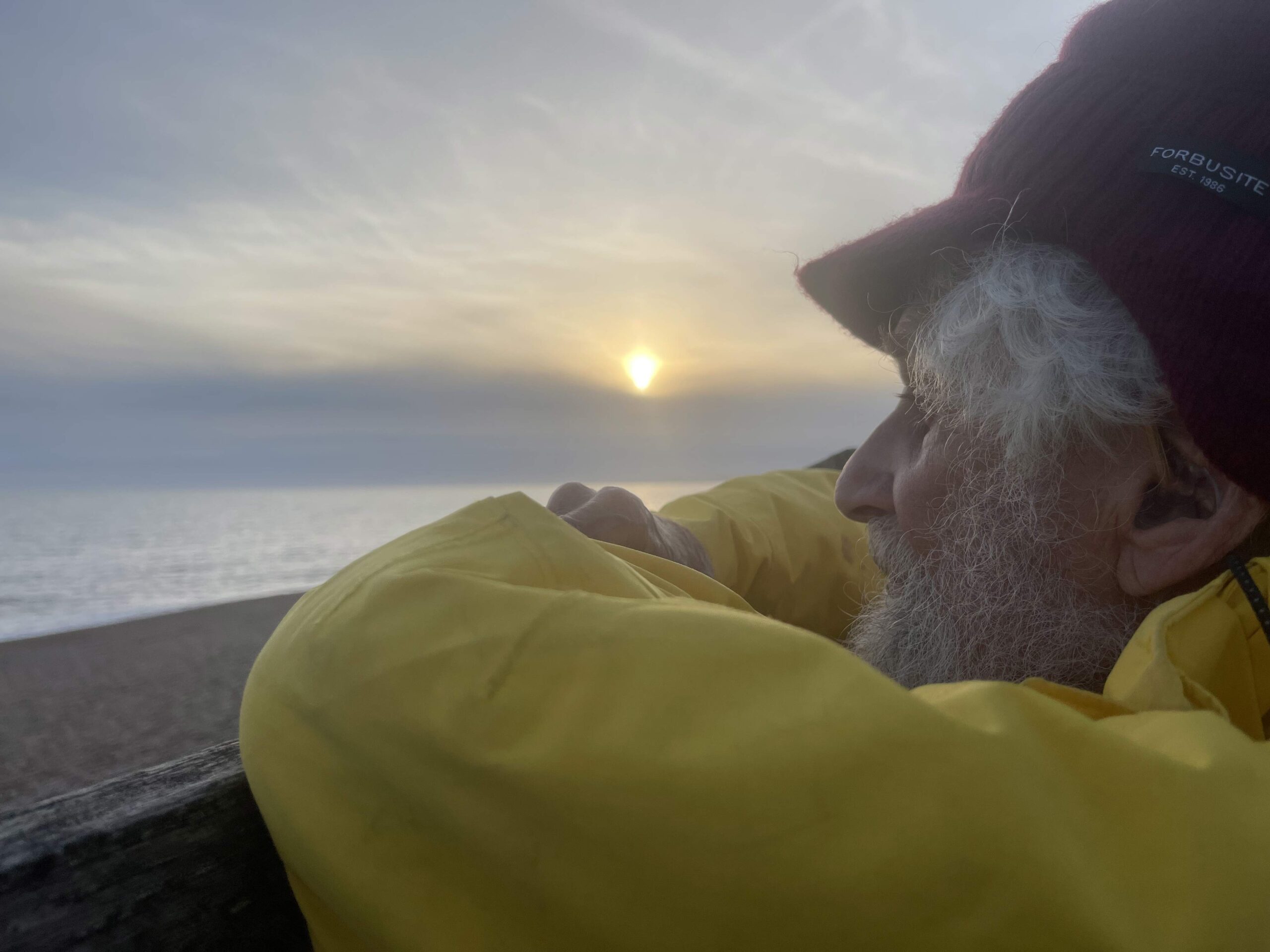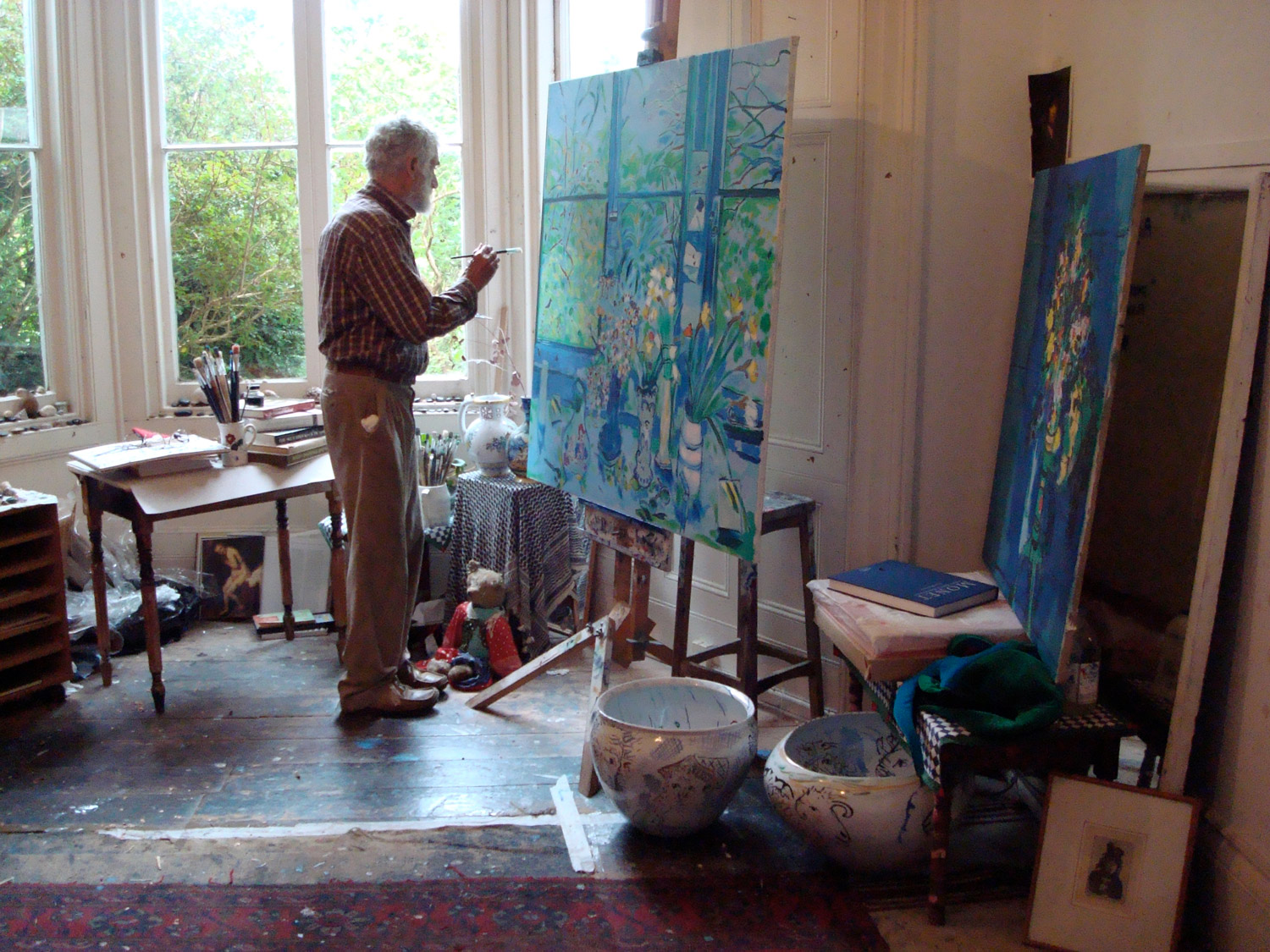
Born in 1928, 96-year-old Philip Sutton RA has been painting exuberant, brilliantly observed paintings throughout the last 70 years. Running through his work is a rich vein of self-portraits which chart his life from 1952 through to the present. Sutton’s love of theatre and Shakespeare in particular manifests in costumes, hats and flamboyant birds in his paintings but most of all in his marvellously expressive face.
Undoubtedly some of his finest paintings, the self-portraits collected in this selling exhibition range from tiny 10cm square to 120cm square. They express every human state from wild and powerful to pitiful and deranged. The artist himself however is clear-headed and full of extraordinary memories and stories that reveal the history of the last century.
Philip and Tim McClure meet every week and discuss ideas, books, philosophy, memories and stories. Tim is perfectly placed to interview Philip and offer a wonderful insight into his view of the world.
A video has been made of the talk which you can see via the link below.
‘Sutton is, of course, unique. Exceptionally for an artist working at the beginning of the twenty-first century he deals almost exclusively with the joys of life. For that matter, he always has done… Sutton’s vision is full of light and joy.
‘In everything he does there is also a vital component of humour and fantasy… His scope is vast, he comprehends multitudes. He is active, extrovert, prolific: art pours from him with abandon and unselfconsciousness. The most immediate characteristics of his work are brilliance and energy.’
JOHN RUSSELL TAYLOR, The Times Art Critic

‘All you need to understand and appreciate Philip Sutton is a lively eye and open mind. You do not have to make your way painfully towards him: his art will welcome you with open arms.
JOHN RUSSELL TAYLOR, The Times
Philip Sutton’s work is full of bright colour, painted with a freedom and clarity originally inspired by Matisse but always entirely his own. His treatment of varied subject matter, from portraits to landscapes and interiors of his studio, is always full of wonder, often combined with humour.

In 2014 Philip Sutton and his wife Heather moved from Pembrokeshire back to Dorset, returning to the county where he was born in Poole on 20th October 1928.
The youngest of four boys, Philip Sutton left school at 14 and worked for three years in a drawing office, waiting for the lunch break so that he could borrow a drawing board and draw. He did national service in the RAF during the Berlin airlift, which earned him a grant to study at the Slade from 1948 – 53. His contemporaries included Craigie Aitchison, Euan Uglow and Michael Andrews. Philip Sutton admired their work but was quite unlike any of them. He found his own style, struck by the mixture of playfulness and seriousness he found in the work of Henri Matisse, an artist who was largely ignored at the time.
William Coldstream, painter and Principal of the Slade, recognised Philip Sutton as ‘a gifted, intuitive painter’ and introduced him to the dealers Roland, Browse and Delbanco. They sold his first painting to Peter Pears and Benjamin Britten and continued to exhibit his work in Cork Street for the next twenty-eight years.
At the Slade he also met Heather Cooke. They were married in June 1953 and departed immediately to travel in Europe for over a year funded by three scholarships including the Prix de Rome. After painting all the daylight hours for six months in the South of France, Sutton joined Stanley William Hayter who ran the famous Atelier 17 printmaking studio where he invented his own unusual woodcutting techniques through observation and experiment.
Back in London, he took a part-time job teaching etching and lithography at the Slade. He and Heather were rescued from living in one room in Kew, with their first son, by Peter Pears offering them the use of the appropriately named Joy Cottage in Snape, Suffolk. They lived there for three and a half years and had two more children, Imogen and Saskia. Sutton developed his style painting the Suffolk landscape while Heather made radio documentaries and a film. In 1958 they were able to buy a small house in Battersea where they had their fourth child, Rebekah. Sutton painted nudes almost continuously in this period with pale colours and delicate lines. They had many visitors and friends throughout the artistic and theatrical world.
Pop Art and the American Expressionists caused turmoil in the British art world in the early sixties. Philip Sutton and family headed out of London for a year in Fiji, funded by the sales of his paintings. While he was away he became established as one of the British painters who epitomised the exuberant sixties. He returned with a full exhibition of tropical paintings and a film Heather had made about him. In 1969 they bought a house in Falmouth and began to spend part of every year there painting expansive townscapes often including the docklands.
In 1976 Hugh Casson invited Sutton to become an RA and his reputation began to move beyond the art market. This led to commissions including designing a tapestry for Shell, a logo for 3i, a design for the rose logo for the Labour party and wall tiles for the restaurant in a bank in Amsterdam. He also began to paint on ceramic pots. The owner of the famous Fulham Pottery commissioned him to make pots with Jean-Paul Landreau resulting in a successful Cork Street exhibition in 1987.
Sutton designed stamps for the Post Office, a poster for the London Underground and crockery for the Royal Academy restaurant. A poster and the flag for the RA Summer Exhibition led the film director Sam Wanamaker to ask Sutton to design a poster for his proposed reconstruction of the Globe Theatre. Sutton became inspired by Agincourt, travelling to northern France to imagine the conflict and painting fantastical pictures reminiscent of Uccello. From 1995-97 the painting of the series was filmed in a television documentary ending with the paintings in the foyer of the Globe.
In 1988 Sutton gave up teaching at the Slade and later they moved to Manorbier in Pembrokeshire, Wales, where they lived until 2014, when they moved to Bridport. Heather died in 2017 after 64 years of marriage. Philip now lives in West Bay close to the gallery and the sea which he has always loved. He still paints every day expressing his appreciation of the world around him.
Sutton describes his technique as ‘just looking with all your attention and painting what you see’. The results are powerful paintings. From vast euphoric celebrations of nature, through heart-stopping self-portraits to tiny, tender drawings, Philip Sutton’s work has never fitted into any box, it was always totally original, true to himself and deserving to be gloriously celebrated.



Whole, true to themselves, emotionally rich and seemingly spontaneous…
Bailey’s paintings belong to a world of which he is himself very much a part. His art has the power to strike a rich chord; the ability to evoke the full choreography of life in all its timbre and cadence, light and joy.
This is a deeply engaged and deeply engaging painter who has achieved what he set out achieve, namely a truly viable language in paint.
Extracts from Vivienne Light FRSA’s foreword to the catalogue for Julian Bailey’s At the Waterfront solo show in 2015.

Whole, true to themselves, emotionally rich and seemingly spontaneous…
Bailey’s paintings belong to a world of which he is himself very much a part. His art has the power to strike a rich chord; the ability to evoke the full choreography of life in all its timbre and cadence, light and joy.
This is a deeply engaged and deeply engaging painter who has achieved what he set out achieve, namely a truly viable language in paint.
Extracts from Vivienne Light FRSA’s foreword to the catalogue for Julian Bailey’s At the Waterfront solo show in 2015.
Sladers Yard
West Bay Road
West Bay, Bridport
Dorset DT6 4EL
gallery@sladersyard.co.uk
Tel. 01308 459511
© Sladers Yard 2024
Café Sladers
Licensed Restaurant
Events
Information
Weddings and Parties
café@sladersyard.co.uk
Site by FER
Sladers Yard
West Bay Road
West Bay, Bridport
Dorset DT6 4EL
gallery@sladersyard.co.uk
Tel. 01308 459511
Café Sladers
Licensed Restaurant
Events
Information
Weddings and Parties
café@sladersyard.co.uk
© Sladers Yard 2024. Site by FER.